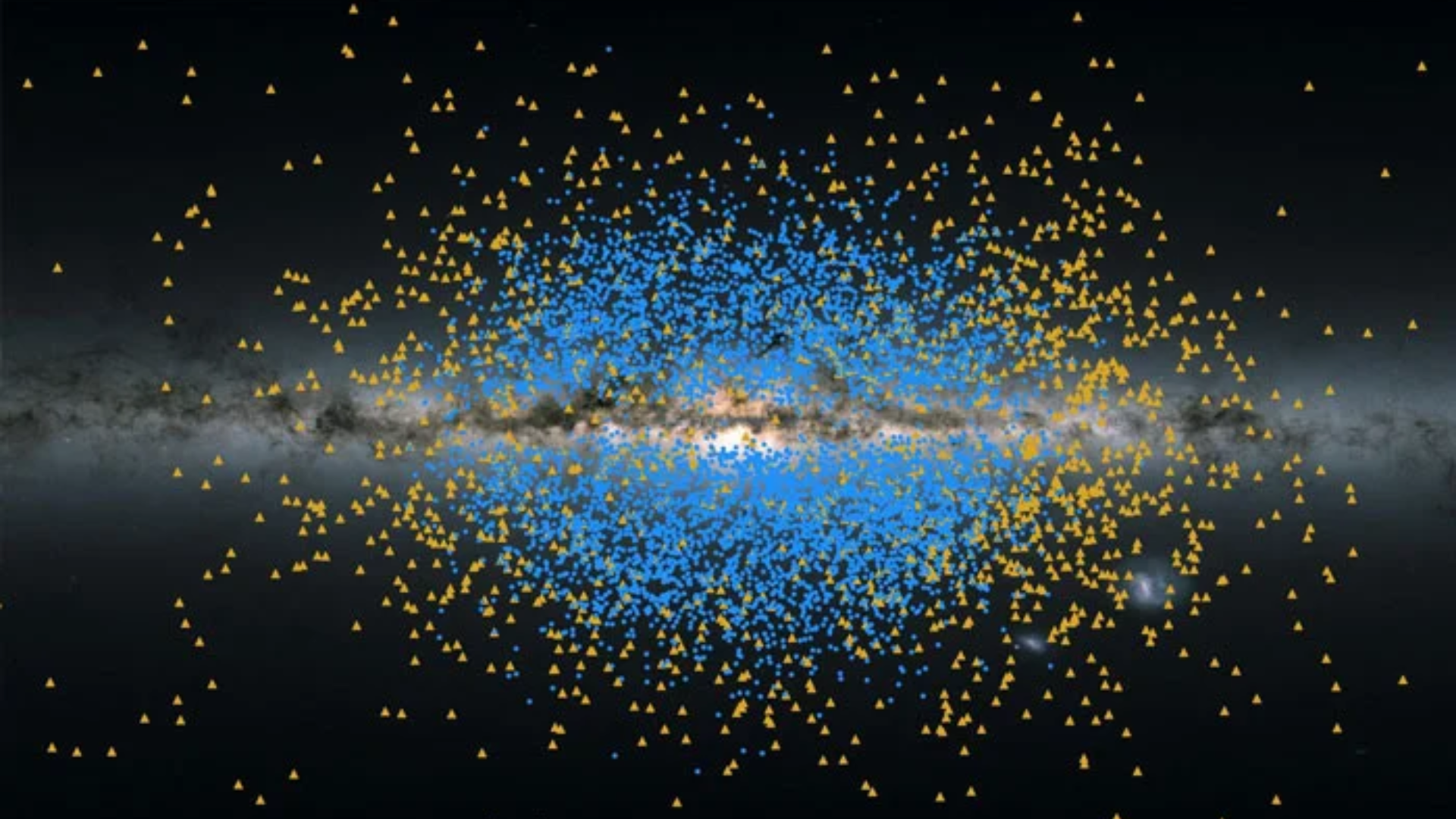A groundbreaking discovery by astronomers from the Max Planck Institute for Astronomy has shed light on the earliest building blocks of the Milky Way galaxy, offering profound insights into its formation and evolution. Named “Shiva” and “Shakti,” these celestial entities are believed to be remnants of galaxies that merged with a primitive version of the Milky Way over 12 to 13 billion years ago, contributing significantly to its growth and development.
The research, unveiled on Thursday, marks a significant milestone in our understanding of the cosmos and the origins of our own galaxy. By combining data from the European Space Agency’s Gaia satellite and the Sloan Digital Sky Survey (SDSS), astronomers have been able to identify these ancient galactic remnants, akin to discovering traces of an initial settlement that eventually evolved into a bustling metropolis on a cosmic scale.
The process of galaxy collisions and mergers sets into motion a series of transformative events. As galaxies converge, their respective reservoirs of hydrogen gas become destabilized, leading to the formation of new stars. Amidst this cosmic dance, stars from the merging galaxies retain distinct characteristics linked to their origin, offering clues about their past.
In their quest to unravel the mysteries of the Milky Way’s origins, astronomers analyzed Gaia data alongside detailed stellar spectra from the SDSS. This meticulous examination revealed that certain metal-poor stars exhibited unique combinations of energy and angular momentum, indicative of their shared ancestry. These stars, clustered around two distinct signatures, were dubbed “Shiva” and “Shakti” by the researchers.
Shakti and Shiva represent more than just astronomical phenomena; they embody the convergence of ancient cosmic forces, echoing the mythological concepts of creation and destruction. Just as the Hindu deities symbolize the eternal dance of life and death, these celestial entities offer a glimpse into the cosmic drama unfolding billions of years ago.
The implications of this discovery extend far beyond astronomical curiosity. By tracing the origins of the Milky Way’s earliest progenitors, astronomers gain invaluable insights into the processes that shaped our galaxy’s evolution. Shakti and Shiva, with their distinctive properties and ancient lineage, serve as tangible links to our galactic past, illuminating the dynamic interplay of cosmic forces that have shaped the universe as we know it.
Moreover, the methodology employed in this research underscores the power of modern astronomical techniques in unraveling the mysteries of the cosmos. The synergy between space-based observations from Gaia and ground-based data from SDSS has enabled astronomers to conduct unprecedented studies of galactic archaeology, delving deep into the cosmic tapestry to unveil its hidden secrets.
As humanity continues its quest to explore the universe and unlock its mysteries, discoveries like Shiva and Shakti serve as reminders of the boundless wonders that await us. With each new revelation, we inch closer to understanding our place in the cosmos and the profound interconnectedness of all things.
In conclusion, the discovery of Shiva and Shakti represents a landmark achievement in our quest to unravel the mysteries of the cosmos. These ancient galactic remnants offer tantalizing glimpses into the early history of the Milky Way, shedding light on the cosmic forces that have shaped our galactic home. As we continue to explore the universe, discoveries like Shiva and Shakti remind us of the enduring beauty and complexity of the cosmos, inspiring wonder and awe in all who contemplate its vastness.





















